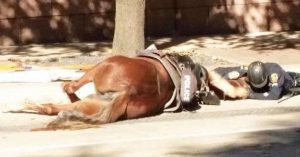“Pip Watch 2021” is well underway Thursday in Big Bear as a pair of eggs are expected to begin hatching any day now.
The two eggs are in the nest belonging to Jackie and Shadow, the region’s well-known pair of mating bald eagles. The nest is located on the northwest side of Big Bear Lake and the area surrounding it has been closed off to protect the birds as well as their potential offspring.
But even though the public isn’t welcome to witness the event in person, fans can still watch the event live on the 24-hour “Big Bear Bald Eagle Cam,” which is operated by the Friends of Big Bear Valley organization.
This year, Jackie laid a total of five eggs in two clutches, but only the two from the second clutch are viable. The initial three eggs from were all lost: two were ravaged by ravens, while a third broke during the laying process.
Jackie laid her next two eggs on Feb. 8 and 11. With the incubation period lasting approximately 35 to 38 days, pip watch formally began on March 15, according to Friends of Big Bear Valley. Last month, after Jackie laid her fourth egg of the year, the U.S. Forest Service indicated the chicks could make their appearance around March 18.
The hatching process can take multiple days and begins with the pip, which is when the eaglet makes the first hole in the shell. “Eggs can be seen moving before and during hatching,” a post on Friends of Big Bear Valley’s Facebook page stated.
The bald eagle pair have been guarding their nest diligently in anticipation of the hatching, incubating the eggs amid snow and frigid temperatures that gripped the area to start the week.
As of Thursday, the mama and papa bald eagles were still continuing to take turns incubating the eggs, and it was not immediately clear whether either shell had any cracks yet.
Sometimes, however, the eggs don’t hatch at all, which is what happened to Jackie’s clutch last year. Nest failure can happen for a variety of reasons, including a lack of fertilization during mating, the embryos not lasting through incubation period or the eaglets inability to break out of their shells, according to the Forest Service.
Suggest a Correction






